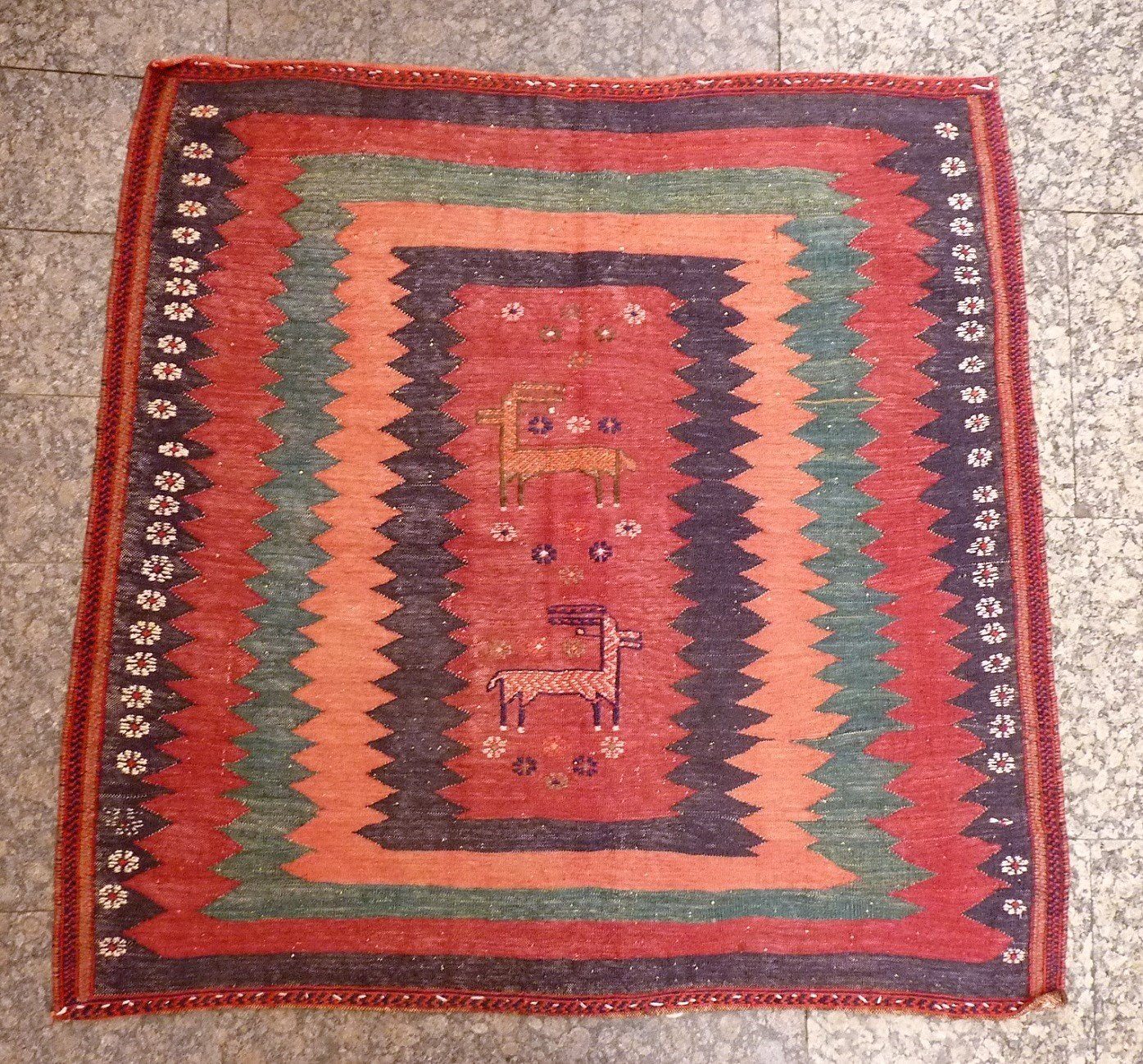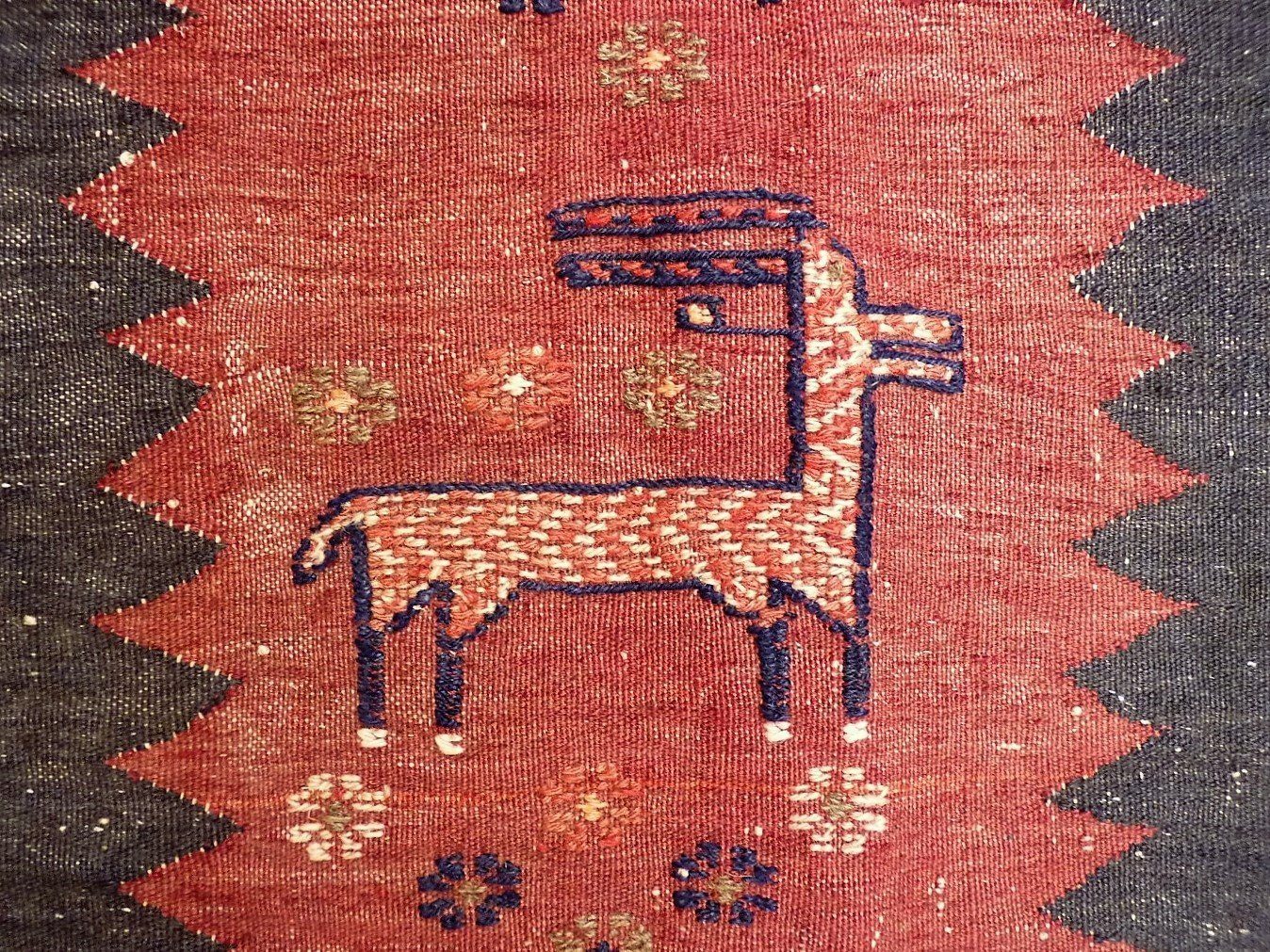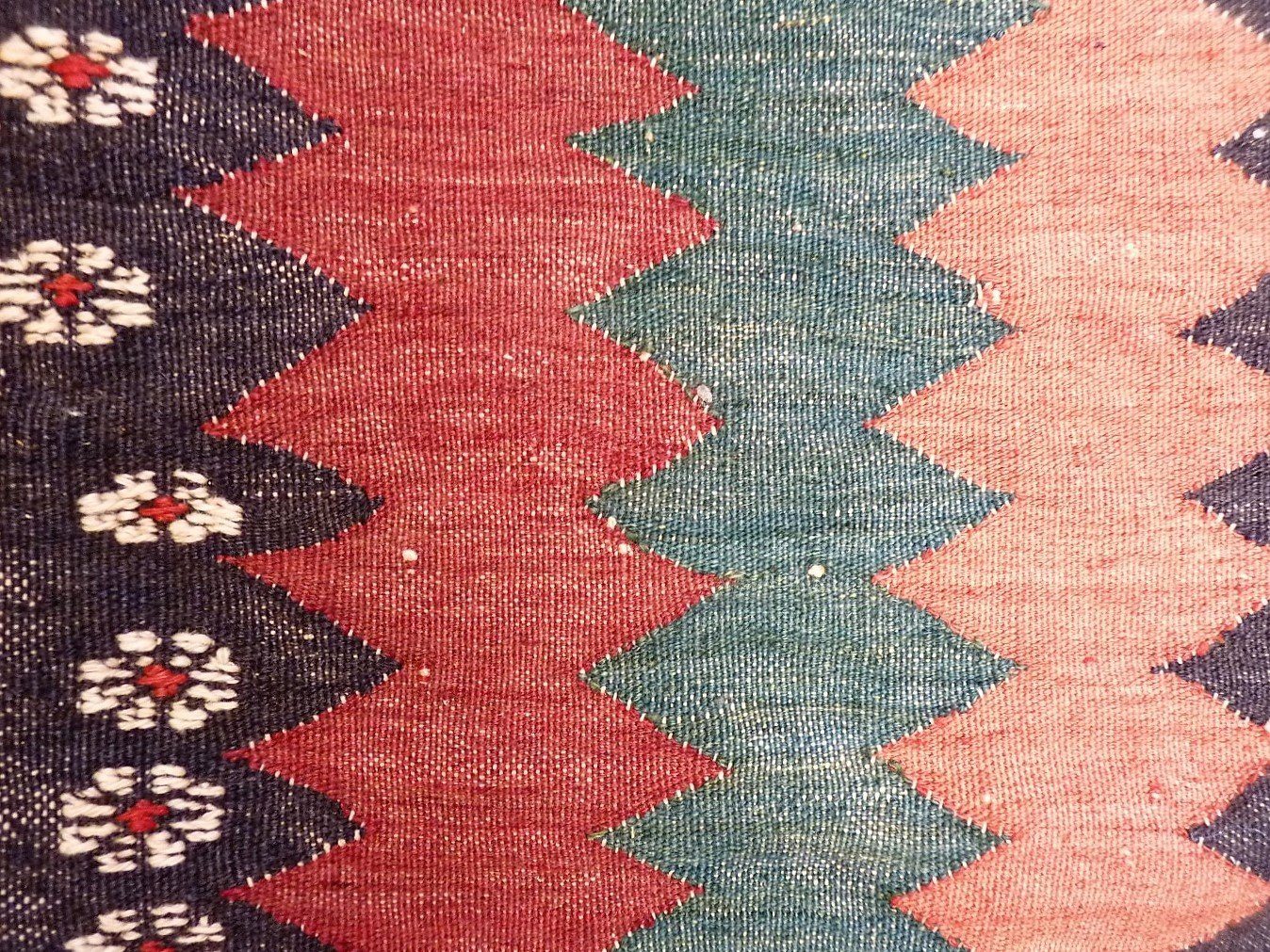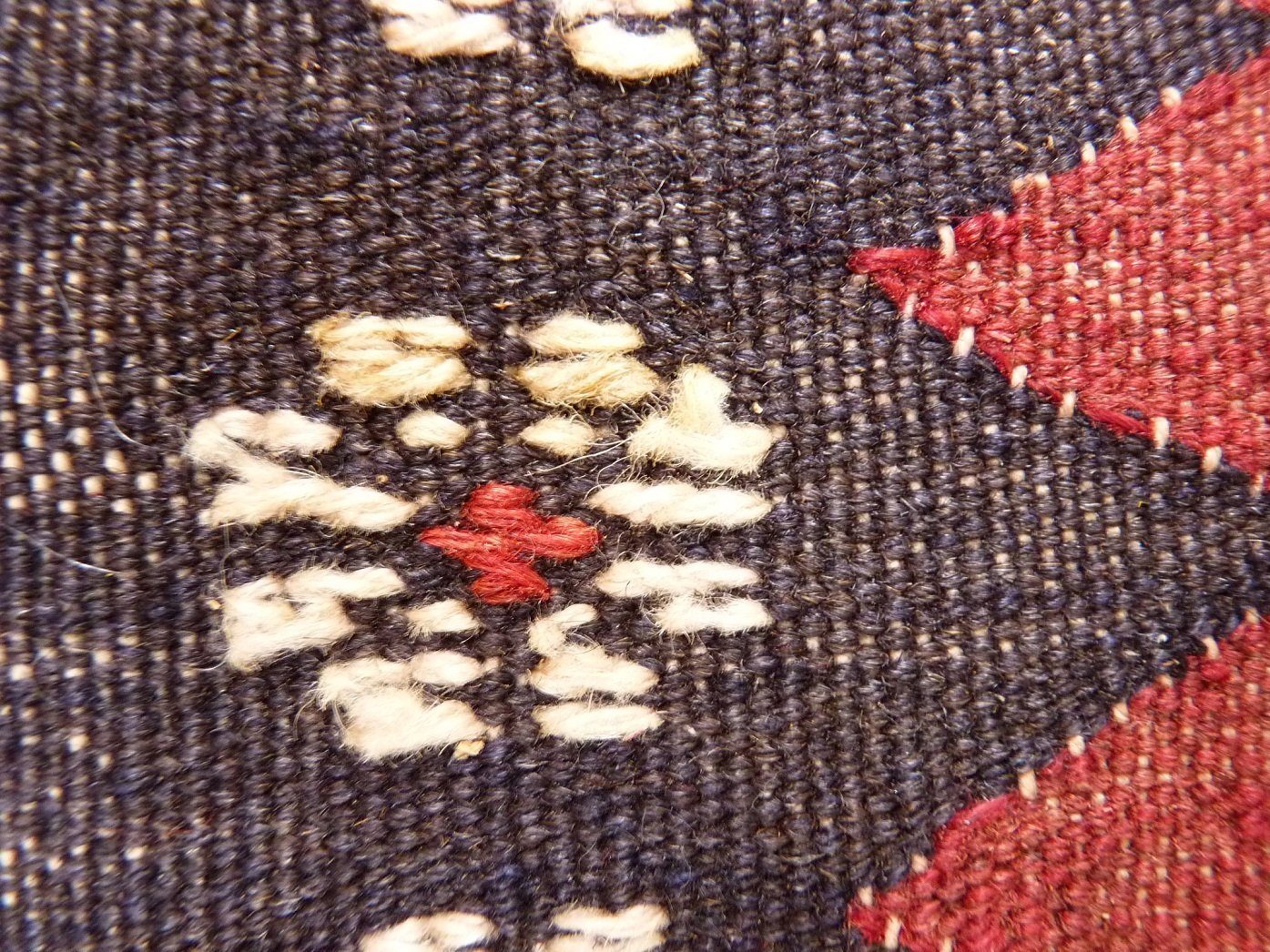350.00 €
Material: 100% hand-spun sheep wool
Size: 115×116 cms
Origin: Afshar tribe, Iran
Date of weaving: 1920-1940s
Afshars live primarily in Southern Iran, east of Khamseh Confederacy territories. They are now largely sedentary; only a few thousands live as nomads. Most descendents of this tribe have mixed extensively with Persian people in hundreds of villages which dot the spacious territory south of the city of Kerman.
Whereas other south Persian tribes borrowed carpet designs from various distant urban workshops, Afshars were strongly influenced by those of a relatively nearby center, Kerman.
Nomadic Afshar pieces include salt bags, saddlebags, horse covers, soumak bags and an assortment of small tribal woven objects. Pieces for domestic use sometimes reveal urban influences but with qualities of verve and individuality that would never appear in items made in an urban workshop.Woolen warp and wefts predominated in Afshar work until cotton was adopted in the 1930s.
The task of identifying true nomadic Afshar work is complicated by the fact that related designs were woven in Persian-controlled villages as well as in those controlled by Afshars
Nomadic Afshar pieces include salt bags, saddlebags, horse covers, soumak rugs, and an assortment of small tribal woven objects. Pieces for domestic use sometimes reveal urban influences but with qualities of verve and individuality that would never appear in items made in an urban work- shop. Woolen warps and wefts predominated in Afshar work until cotton was adopted in the 1930s. Wool warps are almost invariably ivory in color, though minor admixtures of darker wool or goat hair are occasionally found. Foundation and pile wools tend to be soft, and the spin is not as tight as in Qashqa’i rugs. Wefts are commonly dyed red, sometimes with a decidedly orange tinge which distinguishes them from Khamseh work. Another help- ful identifying feature relates to size. Formats of approximately 4 by 5 feet were used so frequently that one can often correctly guess “Afshar” simply by seeing these familiar proportions.
Written material about Afshar rugs is modest but growing. Few tribes reveal such imaginative diversity of patterns, ranging from traditional medallions with Turkoman overtones to Kerman-inspired vase patterns. The various streams of influences in Afshar work account for the periodic discovery of yet another unidentified pattern, often tied to design sources far re- moved from the tribe’s nomadic origins.
1 in stock
Additional information
| Weight | 3.5 kg |
|---|
Subscribe and receive the lastest news



